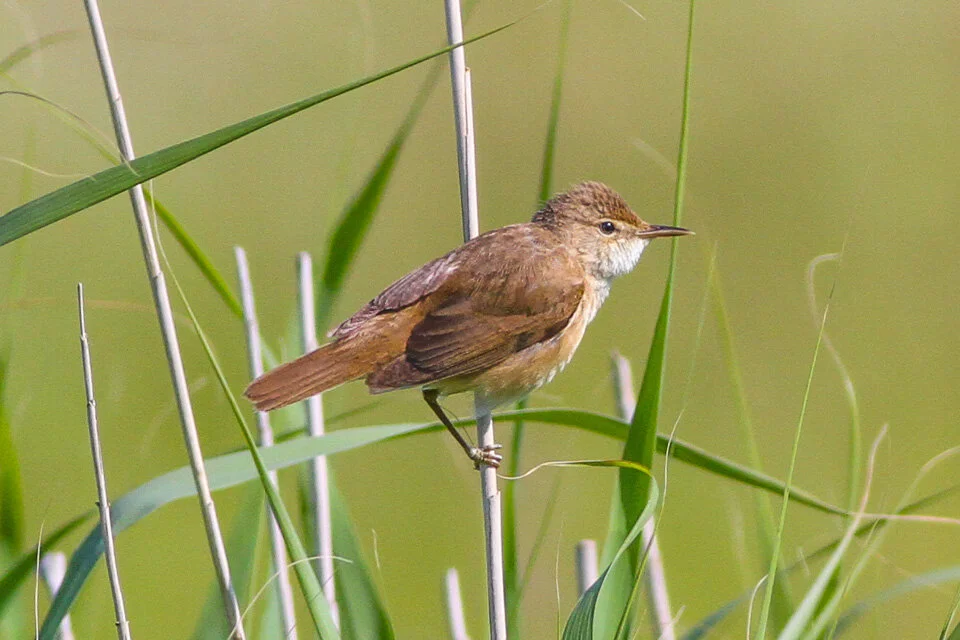47. How do migratory birds make use of the earth’s magnetic field? →
There is plenty of evidence that ‘experienced’ migratory birds (ones that have already made at least one migratory round trip) can cope with massive geographical displacements. They can, for example, successfully complete their journeys, even after being ‘kidnapped’ by scientists and taken to places that are totally unfamiliar - which may be thousands of kilometers away from their normal route.
This is a really astonishing feat. In the same circumstances we humans would be completely at a loss but for our maps, sextants and compasses - or nowadays, GPS.
Some experts believe that these birds are ‘true’ navigators, capable both of determining their present position and of selecting the right course to follow to reach their goal. I’m not so sure.
Well, how do they do perform this feat? It looks increasingly likely that their ability to ‘read’ the characteristics of the surrounding geomagnetic field is the key (though exactly how this sense actually works remains uncertain).
In my book, Incredible Journeys/Supernavigators I mentioned some intriguing evidence that reed warblers might be using changes in magnetic declination (the angular difference between the directions of true north and magnetic north) to estimate their longitude. Such a skill would help them compensate for large scale east/west displacements from their normal migratory routes, though it would not enable them to determine their position.
A fascinating new study from Dmitry Kishkinev and his colleagues now casts doubt on this hypothesis, but it sheds new light on the role that magnetoreception plays in avian navigation.
Kishkinev et al. have now shown that experienced Eurasian reed warblers exposed to altered magnetic fields (characteristic of completely different and unfamiliar locations far from their normal migratory routes) can successfully reorient themselves. However, they can do so only when all three components of the geomagnetic field (declination, inclination and intensity) are present and match a real place - not when declination alone is altered (as in the earlier experiment).
The crucial thing about the latest experiment (like earlier ones from the same team) is that the birds were not physically moved. The changes to which the birds were subjected related only to the surrounding magnetic field. All the other cues available to them (whether based on sight, sound, or smell etc.) remained unaltered.*
One possibility is that these birds have access to some kind of ‘cognitive map’ based on gradients in the three magnetic parameters. (Claims for such ‘maps’ are, I have found, seldom justified by the evidence presented though they make good headlines!)
Such a ‘map’ would presumably be based on the birds’ experience of how the magnetic field varies along their migratory route. Such a map might extend beyond the confines of their standard journey if - and this is a very big if - the birds could somehow infer their new position by extrapolating the spatial variation of the various magnetic cues from those they have observed along their normal migratory corridor.
There are plenty of experts who doubt whether that is even theoretically possible, and it is unlikely that birds could generate positional information from the geomagnetic field that is anything other than very coarse-grained.
However, as the authors of the new paper rightly point out, there is no need to postulate such an extravagant navigational system.
Rather than using their mysterious magnetic map to ‘fix’ their position and set a course to their destination, there is a much simpler and more plausible explanation.
Perhaps the detection of magnetic fields that differ markedly from those they are familiar with warns birds that they are off course. The size and nature of these differences may additionally tell them in which direction they have been displaced. They might then be able to make course adjustments that return them to the correct migratory corridor. Once they are back on track, they should have a good chance of reaching their destination.
A set of skills like that would certainly be very valuable as a way of dealing, for example, with the effects of strong cross-winds. Whether, as the authors seem to imply, it counts as ‘true navigation’ is debatable.
The authors also cautiously observe that their findings do not support ‘a strong role for other environmental cues’ in the navigational tool-kit of the reed warbler.
It will be very interesting to see whether their results can be replicated in other bird species.
*What the researchers actually observe is the direction in which the caged birds attempt to fly under the altered magnetic fields generated by the coil systems that surround them. This technique is widely believed to be a good proxy for actually tracking where the birds go, though some experts question whether it is reliable.

